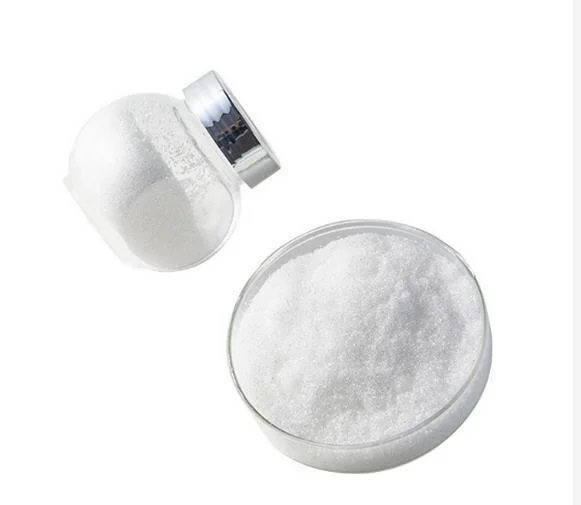Product Description
Cyprosulfamide CAS 221667-31-8
-
221667-31-8
-
-
Entrepreneur
-
White to crystalline powder
-
99% Min

Product Name: Cyprosulfamide
Cas No.: 221667-31-8
Molecular Formula: C18H18N2O5S
Molecular Weight: 374.41
Appearance: White to crystalline powder
Density: 1.41±0.1 g/cm3(Predicted)
Purity: 98% Min
Solubility: Soluble in organic solvents such as acetone, methanol, ethanol, and dichloromethane. Limited solubility in water.
Boiling point: N/A
Melting point: 216 - 217 °C
Flash point: N/A
Refractive index: 1.641
SMILES: C(NS(=O)(=O)C1=CC=C(C(NC2CC2)=O)C=C1)(=O)C3=C(OC)C=CC=C3
InChI Key: InChIKey=OAWUUPVZMNKZRY-UHFFFAOYSA-N
Description:
Cyprosulfamide,also known as ‘Benzamide, N-[[4-[(cyclopropylamino)carbonyl]phenyl]sulfonyl]-2-methoxy-‘ or ‘N-[[4-[(Cyclopropylamino)carbonyl]phenyl]sulfonyl]-2-methoxybenzamide’, is a broad-spectrum systemic herbicide that belongs to the sulfonamide chemical class. It is commonly used in agriculture to control a wide range of grassy and broadleaf weeds in various crops, including cereals, corn, soybeans, and vegetables. Cyprosulfamide works by inhibiting the growth of weeds and interfering with their photosynthesis process. It is effective in both pre-emergence and post-emergence applications.
This herbicide is known for its selective action, targeting specific weeds while being less harmful to desired crops. It offers excellent control over problematic grasses and weeds, helping to maintain crop quality and yield. Cyprosulfamide is characterized by its low water solubility, high stability, and resistance to leaching, making it suitable for a range of soil types and environmental conditions.
When used according to the recommended dosage and application guidelines, Cyprosulfamide provides effective weed control, contributing to the overall success of crop production. It is important to follow proper safety precautions and adhere to local regulations when handling and applying this herbicide.
Features:
1. Broad-spectrum control: Cyprosulfamide exhibits efficacy against a wide range of grassy and broadleaf weeds, making it a versatile herbicide for various crops.
2. Selective action: It selectively targets weeds while causing minimal harm to desired crops, allowing for effective weed control without significant crop damage.
3. Systemic activity: Cyprosulfamide is a systemic herbicide, meaning it is absorbed by plants and transported throughout their tissues, providing control even in hard-to-reach areas.
4. Pre- and post-emergence control: It can be applied both before and after weed emergence, offering flexibility in weed management strategies.
5. Low water solubility: Cyprosulfamide has low water solubility, reducing the risk of leaching and ensuring its effectiveness in different soil types and environmental conditions.
6. Stability: It is characterized by high stability, maintaining its efficacy over time and under varying environmental factors.
7. Enhanced crop quality and yield: By effectively controlling weeds, Cyprosulfamide helps to improve crop quality and maximize yield potential.
8. Compatibility: It can be used in combination with other herbicides or integrated into herbicide resistance management programs.
9. Safety and environmental considerations: Cyprosulfamide has been developed with safety and environmental factors in mind, and it is important to follow proper handling and application practices as directed on the product label and adhere to local regulations.
These features make Cyprosulfamide a valuable tool for weed management in agriculture, contributing to successful crop production and sustainability.
Applications:
1. Crop protection
Cyprosulfamide is used to control weeds in various crops such as corn, soybeans, rice, wheat, vegetables, fruits, and nuts. It effectively targets both grassy and broadleaf weeds, helping to preserve crop yield and quality.
2. Pre-emergence herbicide
It can be applied before weed emergence to prevent weed growth and establishment, providing early-season weed control and reducing competition for nutrients, water, and light.
3. Post-emergence herbicide
Cyprosulfamide can also be used after weed emergence to control existing weeds in the crop. Its systemic action allows it to be absorbed by plants and translocated throughout their tissues, ensuring effective control even in mature weed stages.
4. Residual control
Due to its low water solubility and stability, Cyprosulfamide offers residual activity, providing extended control of weeds over an extended period. This is particularly beneficial in crops with a longer growing season.
5. Selective weed control
It exhibits selectivity, targeting weeds while causing minimal harm to desirable crops, allowing for effective weed management without significant crop damage.
6. Resistance management
Cyprosulfamide can be used as part of an integrated weed management strategy to mitigate herbicide resistance. By employing multiple modes of action, it helps to prevent the development of resistant weed populations.
7. Agricultural sustainability
The use of Cyprosulfamide contributes to sustainable agriculture by reducing the reliance on more environmentally harmful weed control methods, such as excessive tillage or the use of non-selective herbicides.
Storage: Store in a cool, dry, and well-ventilated area.
Package: 25kg/bag or as per your particular request.